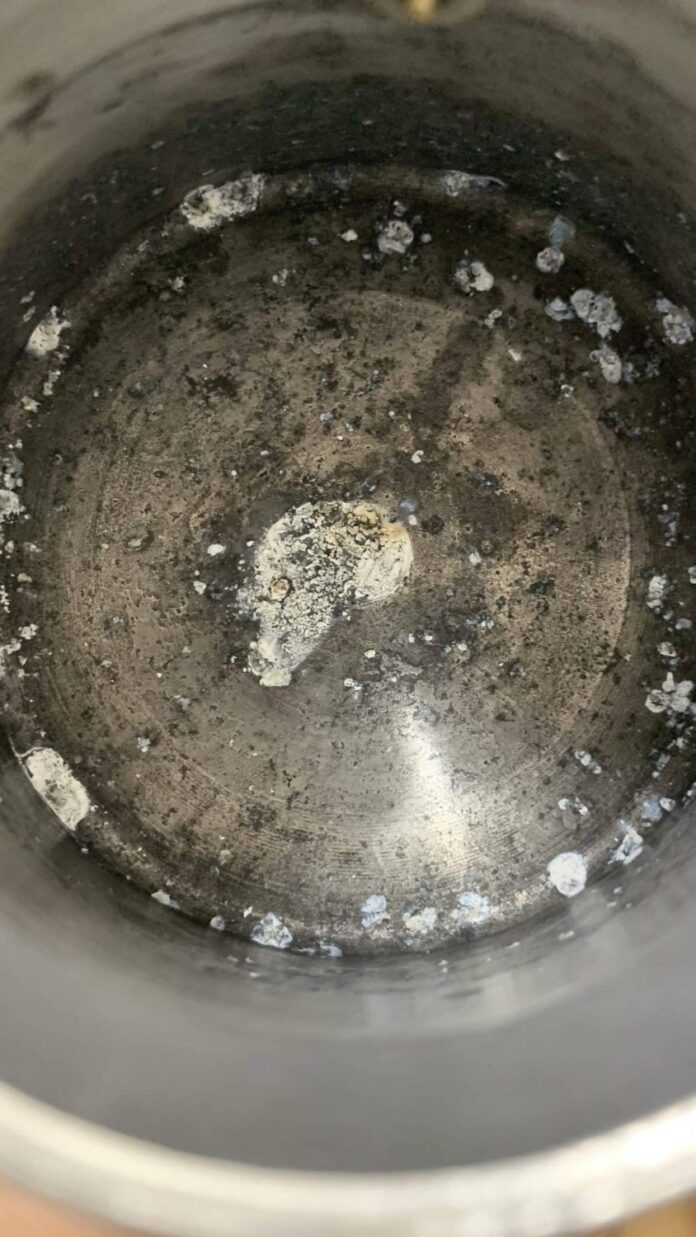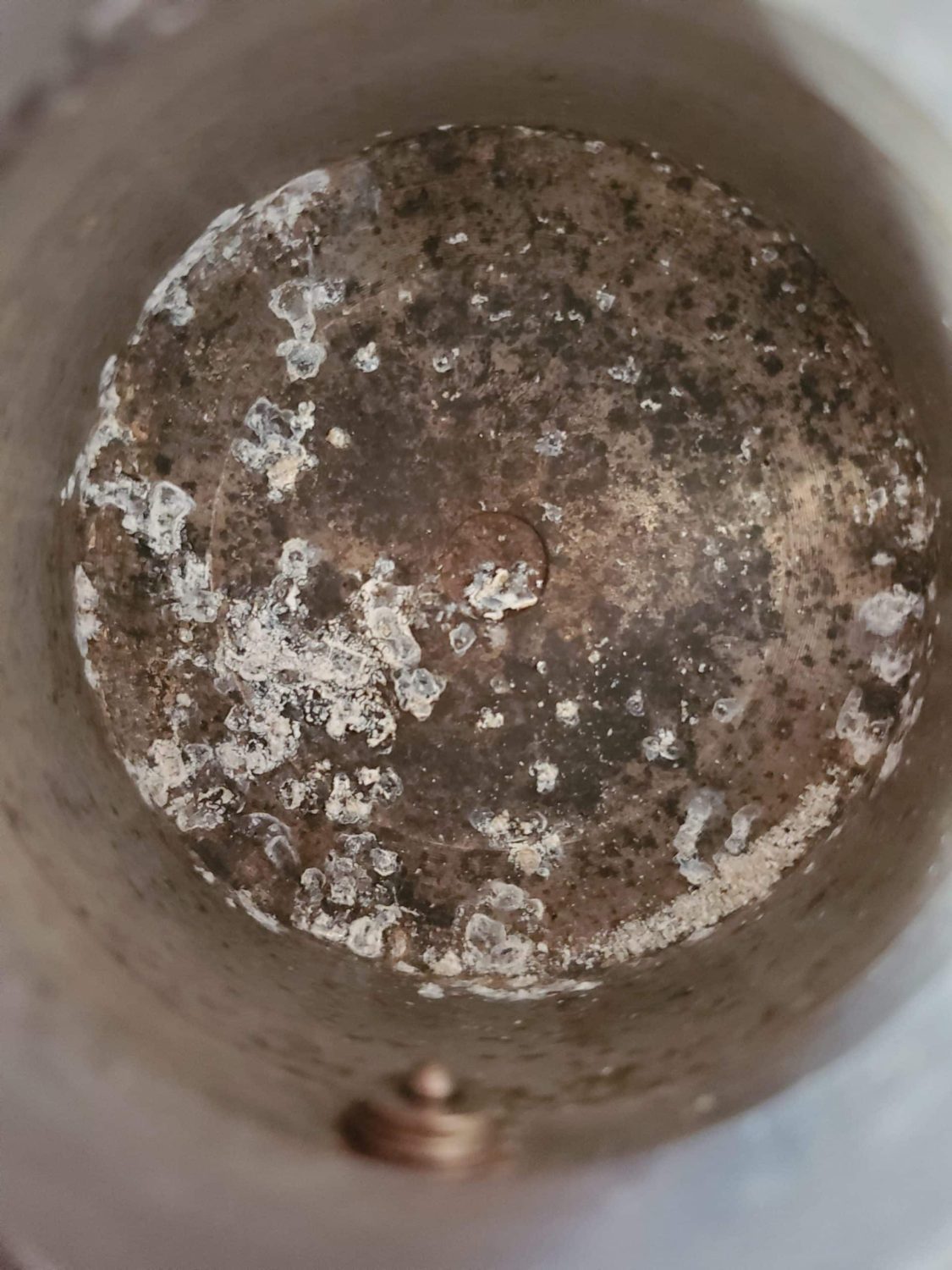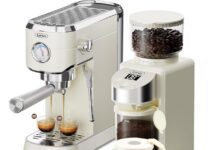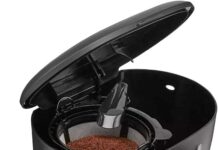Have you ever made a delicious cup of coffee with your trusty Bialetti espresso maker only to be puzzled by the mysterious white residue left behind? You’re not alone. Many coffee enthusiasts have pondered over this perplexing phenomenon. In this article, we unravel the mystery and shed light on what exactly this white stuff is and why it occurs in your beloved Bialetti. Prepare to uncover the secret behind your perfect brew.
Understanding Bialetti Coffee Maker
Overview of Bialetti
Bialetti is a well-known Italian brand that specializes in coffee makers. The company was founded in 1919 by Alfonso Bialetti and is famous for its unique and iconic Moka pot design. Bialetti coffee makers are known for their simplicity and ability to brew delicious and strong coffee.
The Bialetti Moka pot is made of high-quality aluminum and features a distinct octagonal shape. It consists of three main parts: the bottom chamber, a funnel-shaped filter basket, and an upper chamber. Water is heated in the bottom chamber, which creates pressure that forces the water up through the coffee grounds and into the upper chamber, resulting in a rich and flavorful coffee.
How Bialetti Works
The Bialetti coffee maker operates on a simple and traditional brewing method. It uses steam pressure to extract the coffee’s flavor and aroma, similar to espresso machines. The process begins by adding water to the bottom chamber of the Moka pot. Then, coffee grounds are placed in the filter basket, and the upper chamber is tightly screwed onto the bottom chamber.
When the pot is placed on a heat source, such as a stovetop, the water in the bottom chamber starts to heat up. As the water boils, steam is generated, and the pressure forces the hot water to pass through the coffee grounds, extracting the coffee’s oils, flavors, and aroma. Once the brewing process is complete, the upper chamber is filled with freshly brewed coffee, ready to be poured and enjoyed.
The White Residue in Bialetti
What is the White Stuff?
If you have ever used a Bialetti coffee maker, you might have noticed a white residue that forms inside the pot, particularly around the filter basket and the upper chamber. This white residue can be quite confusing and may raise questions about its origin and impact on your coffee.
The white stuff is often referred to as “coffee residue” or “white deposits.” It consists of calcium carbonate, a compound that can be found in water. When the water is heated and evaporates during the brewing process, the mineral deposits are left behind, resulting in the white residue.
Common Presence of White Residue
The presence of white residue is a common occurrence in Bialetti coffee makers and is not exclusive to this brand alone. It can be found in any coffee maker that comes into contact with hard water. Hard water refers to water that contains high levels of minerals such as calcium and magnesium.
If you live in an area with hard water, it is highly likely that you will encounter white residue in your Bialetti coffee maker. The level of residue formation may vary depending on the mineral content in your water supply.
Reasons for White Residue Formation
The formation of white residue in a Bialetti coffee maker can be attributed to two main factors: the coffee-water ratio and water quality.
The coffee-water ratio plays a significant role in the development of white residue. If the ratio is too high, meaning there is too much coffee relative to the amount of water, it can lead to insufficient water evaporation during brewing. This can result in excess mineral deposits being left behind, leading to more significant white residue formation.
Water quality is another crucial factor. As mentioned earlier, hard water tends to have higher mineral content, which increases the likelihood of white residue formation. Additionally, the mineral deposits in water can accumulate over time, further contributing to the amount of white residue.
This image is property of i.stack.imgur.com.
Effects of the White Residue
Aesthetics
The presence of white residue in a Bialetti coffee maker can have aesthetic implications. The residue can make your coffee maker appear dirty and unkempt. It may also affect the taste and appearance of your brewed coffee, as it can mix with the coffee oils and alter the flavor profile. This can be disappointing for coffee enthusiasts who value both the visual appeal and taste of their coffee.
Potential Health Concerns
While the white residue itself is not harmful, it is essential to consider the potential health concerns associated with it. The mineral deposits left behind by hard water can build up over time and form limescale. Limescale can affect the performance of your coffee maker, as it can clog the filter basket and impede the flow of water, resulting in an inefficient brewing process.
Moreover, if the limescale is not regularly removed, it can harbor bacteria and impurities. This can potentially impact the quality and safety of your coffee. Therefore, it is crucial to address the issue of white residue to ensure both the aesthetic appeal and functionality of your Bialetti coffee maker.
Preventing White Residue Formation
Coffee Water Ratio
To minimize white residue formation, it is important to maintain the correct coffee-water ratio. The recommended ratio for a Bialetti coffee maker is one part coffee to seven parts water. By following this ratio, you can ensure an optimal brewing process and reduce the likelihood of excessive mineral deposits being left behind.
Water Quality
Water quality plays a significant role in preventing white residue formation. If you are using hard water, it is advisable to filter your water before using it in your Bialetti coffee maker. This can be done using a water filter or by using bottled or distilled water. By reducing the mineral content in the water, you can significantly reduce the formation of white residue.
Cleaning and Maintenance
Regular cleaning and maintenance are essential for preventing and removing white residue from your Bialetti coffee maker. After each use, it is recommended to disassemble the coffee maker and rinse it with warm soapy water. Pay particular attention to the filter basket and the upper chamber, as these are the areas where the white residue tends to accumulate.
For a deeper clean, you can use a descaling agent specifically designed for coffee makers. Follow the instructions provided by the manufacturer for the best results. Regular maintenance and cleaning will not only prevent white residue formation but will also extend the lifespan of your Bialetti coffee maker and ensure the best-tasting coffee.
This image is property of i.redd.it.
Removing White Residue from Bialetti
Natural Home Remedies
If you prefer natural remedies, there are a few methods you can try to remove white residue from your Bialetti coffee maker. One common method is to mix equal parts of white vinegar and water, then fill the bottom chamber of the coffee maker with the solution. Allow it to sit for approximately 15 minutes, then rinse thoroughly with clean water.
Another natural remedy involves using lemon juice. Squeeze the juice of one lemon into the bottom chamber, add water, and allow the solution to sit for a while. Afterward, rinse the coffee maker thoroughly to remove any residue and odor.
Effective Cleaning Products
If you prefer using specialized cleaning products, there are several options available on the market. Look for descaling products specifically formulated for coffee makers and follow the instructions provided by the manufacturer. These products can effectively dissolve and remove the white residue, ensuring a clean and well-maintained Bialetti coffee maker.
Alternative Brewing Methods
Drip Coffee Makers
If you are looking for an alternative to a Bialetti coffee maker, one option is a drip coffee maker. Drip coffee makers work by pouring hot water over coffee grounds, allowing it to flow through a filter into a carafe. This method produces a milder and less concentrated coffee compared to the robust flavor of the Bialetti Moka pot.
French Press
Another popular alternative is the French press. This brewing method involves steeping coffee grounds in hot water for a few minutes, then pressing down a plunger to separate the coffee from the grounds. The French press offers a full-bodied and rich coffee experience, similar to the Bialetti Moka pot.
Pour Over
Pour over coffee makers have gained popularity in recent years. This method involves pouring hot water over coffee grounds placed in a filter cone or dripper. The water slowly drains through the grounds, producing a clean and flavorful cup of coffee. Pour over brewing can be a meticulous process that allows for precise control over the extraction and flavor profile of the coffee.
This image is property of i.redd.it.
Conclusion
Understanding the white residue in Bialetti coffee makers is important for both the maintenance of your coffee maker and the quality of your brewed coffee. While the white stuff may be unsightly and problematic, it can be easily prevented through proper maintenance, including regular cleaning and using the correct coffee-water ratio. By following these steps, you can ensure that your Bialetti coffee maker continues to provide you with delicious and satisfying coffee, free from any unwanted residue.








































